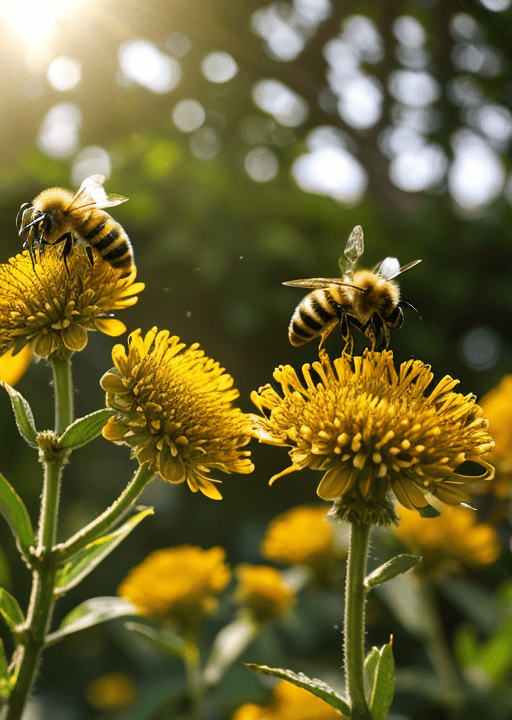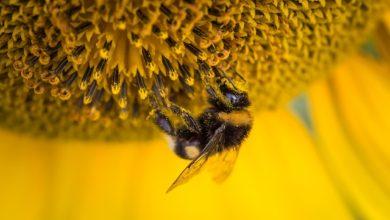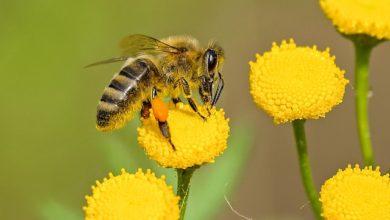Do Bees fly when it’s windy?

Honey bees are integral to our ecosystem, playing a crucial role in pollination and supporting the growth of various plants and crops. However, their activity can be significantly influenced by weather conditions, including wind.
In this article, we will explore the impact of windy conditions on honey bee flight and pollination, as well as how beekeepers manage these challenges. Understanding the resilience of honey bees in the face of wind is essential for safeguarding their crucial role in our environment.
The Importance of Honey Bees to the Environment
Honey bees play a crucial role in our ecosystem, particularly in the process of pollination. This chapter will explore the significance of honey bees to the environment, their contribution to pollination, and how weather conditions can impact their activity.
- The role of honey bees in pollination is essential for the reproduction of flowering plants. As honey bees collect nectar from flowers to make honey, they also inadvertently transfer pollen from one flower to another. This transfer of pollen is vital for the fertilization of plants and the production of fruits and seeds.
- Without honey bees and other pollinators, many plant species would struggle to reproduce, which could have cascading effects on entire ecosystems. Pollination is critical for maintaining biodiversity and ensuring the survival of countless plant species.
- In addition to their role in pollination, honey bees also provide valuable products such as honey, beeswax, and royal jelly. These products have been used by humans for centuries for their various health benefits and culinary uses.
- The impact of weather on honey bee activity is significant, as bees are highly sensitive to environmental conditions. Extreme temperatures, heavy rain, and strong winds can all affect bee behavior and foraging patterns.
- Bees rely on warm, sunny weather to be active and productive. During periods of inclement weather, bees may stay in their hives to conserve energy and protect themselves from the elements. This can have implications for both their pollination efforts and honey production.
Honey bees are a vital component of our environment, playing a crucial role in pollination and ecosystem health. Understanding the importance of honey bees and the factors that influence their activity is essential for ensuring their continued survival and the health of our planet.
Navigating Windy Conditions – Can Honey Bees Fly in Windy Conditions?
Honey bees, with their delicate wings and lightweight bodies, are incredible flyers that are capable of navigating through various weather conditions. However, windy conditions pose a unique challenge for these industrious insects. In this chapter, we will explore the anatomy of honey bees and their ability to withstand wind, the impact of wind on their foraging behavior, how wind affects their flight patterns, the challenges they face in windy conditions, and the strategies they use to navigate through such conditions.

- The anatomy of honey bees plays a crucial role in their ability to withstand windy conditions. Their bodies are streamlined and their wings are intricately designed for efficient flight.
- Wind can have a significant impact on the foraging behavior of honey bees. Strong winds can make it difficult for bees to maintain their precise flight paths to and from the hive, ultimately affecting their ability to collect nectar and pollen.
- The flight patterns of honey bees can be disrupted by windy conditions, causing them to struggle with navigation and communication with other bees.
- Windy conditions present challenges for honey bees in terms of energy expenditure and resource collection. Flying in windy conditions requires more energy, which can impact the overall productivity of the hive.
- To navigate through windy conditions, honey bees employ a variety of strategies. They may adjust their flight speed, alter their flight path, or even seek shelter in the hive until the wind subsides.
Overall, honey bees are resilient creatures that have evolved to adapt to various environmental challenges, including windy conditions. By understanding the impact of wind on their behavior and the strategies they use to overcome these challenges, we can appreciate the remarkable abilities of these tiny flying insects.
The Influence of Wind on Pollination
When it comes to pollination, many factors play a crucial role in the successful transfer of pollen. One such factor that often goes unnoticed is the influence of wind on pollination. In this chapter, we will explore how wind impacts the movement of pollen, the behavior of honey bees during windy conditions, the consequences of windy weather on crop pollination, the role of honey bees in ensuring pollination even in windy conditions, and the benefits of honey bees’ resilience in the face of wind for agriculture.
The impact of wind on the movement of pollen
Wind plays a significant role in the movement of pollen, especially for plants that rely on wind pollination. As the wind blows, it carries pollen grains from one plant to another, facilitating cross-pollination. This process is crucial for plant reproduction and the production of seeds.
The behavior of honey bees during windy conditions and its effect on pollination
Honey bees are known for their important role in pollination, but their behavior can be affected by windy conditions. During strong winds, honey bees may struggle to fly and navigate effectively, leading to reduced foraging activity. This can impact the pollination of crops that rely on bee pollination.
The consequences of windy weather on crop pollination
Windy weather can have negative consequences on crop pollination, particularly for plants that depend on animal pollinators like bees. If windy conditions persist, pollinators may be less active, resulting in lower pollination rates and reduced crop yields. Farmers must be aware of the potential impact of wind on pollination and take necessary precautions to mitigate any losses.
The role of honey bees in ensuring pollination even in windy conditions
Despite the challenges posed by windy conditions, honey bees have adapted mechanisms to continue pollination even in unfavorable weather. Bees are resilient pollinators that can still visit flowers and transfer pollen efficiently, ensuring the reproductive success of plants even when faced with windy conditions.
The benefits of honey bees’ resilience in the face of wind for agriculture
The resilience of honey bees in windy conditions is beneficial for agriculture as it ensures the continued pollination of crops. By persevering in adverse weather, honey bees help maintain ecosystem balance and support food production. Their ability to pollinate crops even in challenging conditions highlights the importance of protecting bee populations and promoting pollinator-friendly practices in agriculture.
Wind plays a significant role in pollination, impacting the movement of pollen and the behavior of pollinators like honey bees. Understanding the influence of wind on pollination is essential for sustainable agriculture and ecosystem health. By recognizing the challenges posed by windy conditions and the resilience of pollinators, we can work towards preserving pollination processes and ensuring food security for the future.
How Beekeepers Manage Windy Conditions
Windy conditions can have a significant impact on the stability of beehives, posing a threat to the overall health and well-being of honey bee colonies. As such, beekeepers must be well-prepared to protect their hives from strong winds and mitigate any potential damage that may result from adverse weather conditions.
Here are some strategies that beekeepers use to manage windy conditions:
- Ensuring the hive is securely fastened to a stable base or stand to prevent it from being easily toppled over by strong gusts of wind.
- Adding additional weights, such as bricks or concrete blocks, to the top of the hive to provide extra stability and prevent it from being blown over.
- Placing windbreaks, such as fences or shrubs, around the hive to help block the wind and minimize its impact on the hive.
- Orienting the entrance of the hive away from prevailing winds to reduce the amount of wind that enters the hive and disturbs the bees.
Proper hive placement and orientation are crucial factors in mitigating the effects of wind on beehives. Beekeepers should carefully consider the location of their hives and take steps to protect them from the potentially damaging effects of strong winds.
When weather conditions are unfavorable, beekeepers may need to intervene to provide additional support and protection to their honey bee colonies. This could involve checking on the hives more frequently, making repairs to any damaged or compromised hives, or providing supplemental food and water to help the bees weather the storm.
Overall, managing windy conditions requires careful planning, attention to detail, and a willingness to take proactive steps to protect honey bee colonies from the potentially harmful effects of strong winds. By implementing these techniques and strategies, beekeepers can help ensure the health and well-being of their bees even in the face of challenging weather conditions.

Conclusion
Bees are capable of flying in mild to moderate windy conditions, thanks to their impressive flying skills and adaptation mechanisms. While they may face challenges in extremely strong winds, bees remain resilient and resourceful insects that continue to thrive and contribute to our ecosystem.
FAQ:
Can honey bees fly in windy conditions?
- Honey bees are capable of flying in moderate wind conditions, thanks to their anatomical adaptations and flight muscles. However, strong winds can pose challenges for them, affecting their foraging and pollination activities.
How does wind impact honey bee pollination?
- Wind can influence the movement of pollen, potentially disrupting the pollination process. Despite this, honey bees continue their pollination efforts, demonstrating their resilience in the face of windy conditions.
What are some strategies for managing honey bee colonies during windy weather?
- Beekeepers implement measures to protect beehives from the impact of wind, including hive placement and orientation. They play a crucial role in supporting honey bee populations and ensuring their resilience in challenging weather conditions.




